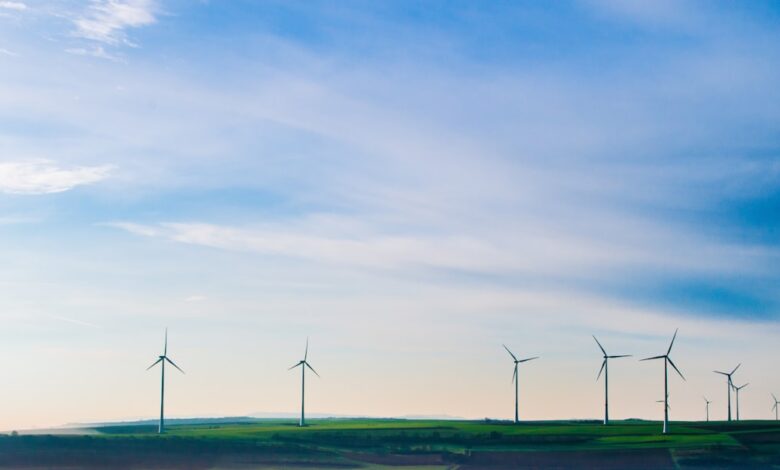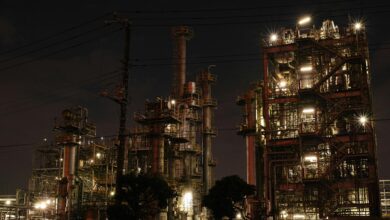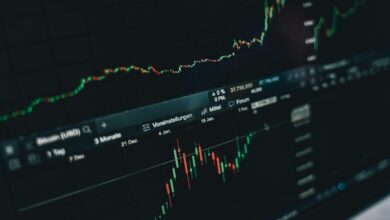Powering Tomorrow: The Role of Nuclear Energy in a Low-Carbon Future

As the world grapples with the urgent need to reduce carbon emissions and combat climate change, the search for sustainable energy solutions has never been more critical. Among the various energy sources vying for a place in the low-carbon future, nuclear energy stands out as a powerful yet often controversial player. With advancements in technology and a growing recognition of its low greenhouse gas emissions, nuclear power is experiencing a renaissance, positioning itself as a vital component of a cleaner, more sustainable energy landscape. This article delves into the future of nuclear energy, exploring its revitalization in the context of the low-carbon transition, the innovations that are shaping its next chapter, and the challenges and opportunities that lie ahead. From the promise of next-generation reactors to the complexities of public perception and policy, we will examine how nuclear energy can navigate this transformative era and secure its role in a sustainable energy future.
- 1. "Nuclear Renaissance: Revitalizing a Key Player in the Low-Carbon Transition"
- 2. "Innovations in Nuclear Technology: Paving the Way for Sustainable Energy Solutions"
- 3. "Challenges and Opportunities: Navigating the Landscape of Nuclear Energy Policy and Public Perception"
1. "Nuclear Renaissance: Revitalizing a Key Player in the Low-Carbon Transition"
As global efforts to combat climate change intensify, the role of nuclear energy is undergoing a significant transformation, often referred to as a "Nuclear Renaissance." This resurgence is driven by the urgent need to transition to low-carbon energy sources while ensuring reliable and consistent power supply. Nuclear energy, with its capacity to generate large amounts of electricity without emitting greenhouse gases during operation, is increasingly recognized as a pivotal player in achieving climate goals and meeting the rising demand for energy.
The Nuclear Renaissance is characterized by advancements in technology, including the development of small modular reactors (SMRs) and generation IV reactors, which promise enhanced safety, efficiency, and reduced waste. These innovative designs address many of the concerns that have historically plagued the nuclear industry, such as high costs, long construction times, and safety risks. Furthermore, the integration of nuclear power with renewable energy sources, such as solar and wind, can help stabilize the grid, providing a reliable backbone for increasingly intermittent energy supplies.
Investment in nuclear energy is also gaining momentum as countries set ambitious net-zero targets. Governments are recognizing that to achieve these goals, a diversified energy portfolio is essential. Nuclear power can complement renewable energy, filling the gaps when solar and wind resources fluctuate. As a result, many nations are revisiting their nuclear policies, with some even planning to extend the life of existing reactors or invest in new plants.
Public perception of nuclear energy is slowly shifting as well, largely due to increased awareness of the catastrophic impacts of climate change and the need for substantial reductions in carbon emissions. Education and outreach efforts are vital to inform communities about the safety measures and technological innovations that mitigate risks associated with nuclear power. As the discourse around energy transitions evolves, a more informed public may embrace nuclear energy as a critical component of a sustainable future.
In conclusion, the Nuclear Renaissance signifies a renewed commitment to harnessing this low-carbon energy source in the fight against climate change. By embracing technological innovation, enhancing safety protocols, and fostering public understanding, nuclear energy can emerge as a cornerstone of a resilient and low-carbon energy landscape. As the world grapples with the dual challenges of energy demand and climate mitigation, the revitalization of nuclear power represents not just an opportunity but a necessity in the transition toward a sustainable future.
2. "Innovations in Nuclear Technology: Paving the Way for Sustainable Energy Solutions"
Innovations in nuclear technology are poised to play a crucial role in shaping a sustainable energy future, especially in the context of a low-carbon world. As nations strive to mitigate climate change and reduce reliance on fossil fuels, advancements in nuclear power present a compelling alternative.
One of the most promising developments is the advent of small modular reactors (SMRs). These compact systems are designed to be built in factories and transported to sites for assembly, offering greater flexibility and scalability compared to traditional large reactors. SMRs not only require a smaller initial investment but can also be deployed in remote areas where energy needs are rising but infrastructure is lacking. Their inherent safety features, such as passive cooling systems, further enhance their appeal, reducing the risk of accidents.
Another innovative approach is the development of advanced reactors, including Generation IV designs and molten salt reactors. These technologies aim to improve efficiency, reduce waste, and enable the recycling of nuclear fuel. By utilizing thorium, an abundant resource, some advanced reactors can operate with enhanced safety and a lower environmental footprint. This shift towards sustainable fuel cycles can significantly diminish the long-term challenges associated with nuclear waste management.
Moreover, the integration of digital technologies and artificial intelligence into nuclear operations is enhancing safety and efficiency. Smart monitoring systems can optimize reactor performance and predict maintenance needs, reducing downtime and operational costs. Additionally, advancements in materials science are leading to the development of more resilient reactor components, extending the lifespan of existing plants and enabling the construction of next-generation facilities.
Nuclear energy is also increasingly being recognized for its potential role in hydrogen production, a key component in decarbonizing sectors like transportation and heavy industry. High-temperature gas-cooled reactors, for instance, can generate hydrogen through thermochemical cycles more efficiently than traditional methods. This dual-use capability positions nuclear power as a versatile player in the clean energy transition.
In summary, the future of nuclear energy is being transformed by a wave of innovations that not only enhance the safety and efficiency of nuclear systems but also align with global sustainability goals. By embracing these advancements, the nuclear sector can help provide reliable, low-carbon energy solutions that are essential for achieving a sustainable and resilient energy future.
3. "Challenges and Opportunities: Navigating the Landscape of Nuclear Energy Policy and Public Perception"
As the world grapples with the pressing need to reduce carbon emissions and transition to sustainable energy sources, nuclear energy stands at a critical crossroads. While it presents a viable solution for large-scale, low-carbon power generation, several challenges and opportunities shape its future in the global energy landscape.
One of the foremost challenges is public perception, often influenced by historical events such as the Chernobyl and Fukushima disasters. These incidents have left lingering fears about safety, waste management, and the potential for catastrophic failure. Overcoming this skepticism requires robust communication strategies that emphasize advancements in nuclear technology, such as small modular reactors (SMRs) and Generation IV reactors, which promise enhanced safety features and reduced waste. Engaging communities in discussions about the benefits of nuclear power, alongside transparent safety protocols and emergency preparedness plans, can help rebuild trust and foster acceptance.
Policy frameworks also play a pivotal role in navigating the nuclear landscape. Governments must create consistent, long-term energy policies that support nuclear development while balancing safety, environmental concerns, and public sentiment. Regulatory bodies need to streamline permitting processes for new plants and innovations, reducing bureaucratic delays that can stifle investment. Moreover, international collaboration on nuclear safety standards and waste management practices can enhance global confidence in nuclear energy as a safe and viable option.
On the opportunity front, there is a growing recognition of nuclear energy's potential to complement renewable sources like wind and solar. Nuclear power can provide a stable, reliable backbone to an increasingly variable energy grid, helping to maintain energy security and reliability. Innovative financing models, such as public-private partnerships, can attract investment to nuclear projects, while research and development into advanced technologies can drive down costs and improve efficiency.
As nations pursue ambitious climate goals, the convergence of policy support, technological innovation, and improved public perception presents a unique opportunity for nuclear energy to play a significant role in a low-carbon future. By addressing the challenges head-on and leveraging the potential of nuclear power, society can harness this energy source to help achieve a sustainable and resilient energy system.
In conclusion, the future of nuclear energy in a low-carbon world hinges on a delicate balance of innovation, policy reform, and public acceptance. As we stand on the brink of a nuclear renaissance, advancements in technology promise to unlock the potential of nuclear energy as a safe, sustainable, and reliable source of power. However, this potential can only be fully realized by addressing the challenges that accompany its revival, including regulatory hurdles, waste management, and public concerns.
Navigating the complex landscape of nuclear energy policy will be crucial in fostering a supportive environment for investment and development. By engaging in transparent dialogue with communities and stakeholders, the nuclear industry can work to rebuild trust and highlight its role in achieving global climate goals.
As we strive for a low-carbon future, integrating nuclear energy into our energy mix offers a powerful solution to meet the growing demand for clean energy. By embracing innovation and addressing the multifaceted challenges ahead, we can harness the full potential of nuclear power to contribute significantly to a sustainable and resilient energy future. The path forward may be fraught with obstacles, but with concerted effort and vision, nuclear energy can emerge as a cornerstone of our efforts to combat climate change and usher in a new era of energy sustainability.





